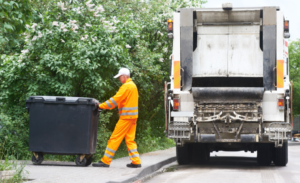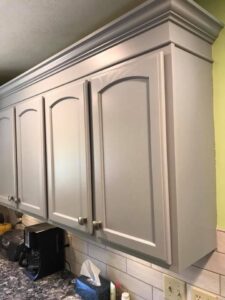When was the last time you had your septic tank cleaned? Septic tank cleaning is one of those chores that not everyone looks forward to, but it is crucial for the longevity and health of your home plumbing system.
Without it, your septic tank can start expelling untreated sewage into the soil and water sources around you. Keeping up with regular cleanings prevents this. Contact a Septic Tank Cleaning Perth now!

A septic tank is one of the most important parts of your septic system. It is where your household waste is temporarily stored before some degree of treatment takes place. It is a precast concrete tank that is buried underground, usually in a corner of the yard outside your home. Inside the tank, microorganisms decompose and separate household wastewater into three distinct layers.
The liquids that leave your home through drains flow into the first chamber of the septic tank. This water is not fully treated because bacteria haven’t finished their job yet. The top layer of the liquid contains oils and grease, which float to the surface. Bacteria in the tank work to break these materials down into a second layer called sludge. The bottom layer is a mixture of solid waste particles and the sludge from the top layer.
Once the liquids have been separated from the sludge, they leave through the tank vent into an absorption field (or leach field). The wastewater moves through a series of pipes in gravel trenches. As it seeps through the soil, the sewage is absorbed into groundwater supplies and natural watercourses.
Your septic system’s performance is optimized when the soil in the absorption field is sandy, loamy or clay-like, so that it can take in and hold the liquid waste easily. Soil that is too dense can block or restrict flow.
A septic system also needs to be free of obstructions, especially roots from nearby trees. These roots can enter the tanks and clog or damage drainage fields. It’s also a good idea to avoid building structures, such as playgrounds and swimming pools, near the tank and drain field. Driving or parking vehicles, equipment or structures over the septic system or its components may also cause damage.
The septic system can be damaged by improper or excessive use of detergents, cleaners and other household chemicals. In addition, flushing items that don’t break down in the plumbing system—such as cigarette butts, coffee grounds, cotton swabs and menstrual hygiene products—can be damaging. These products can clog the tank, the absorption field or the septic system’s drain lines.
A septic system is a permanent, safe and effective way of disposing of sewage or wastewater from your home when public sewer systems are not available. Wastewater contains germs and other pollutants that can cause health problems, so it needs to be treated before it is released into the environment. The majority of the septic system treatment happens in your drain field, but the septic tank also plays an important role. A septic tank is one large underground container that holds and treats wastewater from your house.
When water enters a septic tank, it goes through a process called settling. Solid matter sinks to the bottom of the tank to form a layer of sludge, while oils and grease float to the top to create a layer of scum. Bacteria inside the tank breaks down the solid matter and partially treats the wastewater. The liquid wastewater that remains is called effluent. This wastewater flows through the outlet of the septic tank, which should have a screen or filter to block out larger particles. The wastewater then enters an absorption field, which is usually made of gravel-filled trenches with perforated pipes in them. The wastewater seeps through the gravel and into the soil below, where it is absorbed by the ground and grass above.
Some things that can affect a septic system include flushing non-biodegradable products down the toilet such as cigarette butts, cotton buds or swabs, menstrual hygiene products or condoms. These items can clog the septic system and lead to expensive problems, including dangerous sewage backups in your home or yard or contamination of drinking water supplies.
You can prevent problems with your septic system by limiting the amount of waste you put into it. Reduce the amount of trash you throw away by recycling whenever possible. Avoid placing large objects in the yard that could pierce the septic tank or septic pipe, and plant trees only in areas far from your septic tank. Also, make sure that your septic tank is properly vented so that gases can escape. If you install a new septic system, an engineer may recommend the addition of an effluent filter to your drain field. This cylindrical device fits over the septic tank outlet baffle and traps suspended solids, which protects your drain field from clogs.
Septic systems are essentially an underground tank where wastewater moves from homes and businesses. Inside, helpful bacteria break down the waste and solids to form a layer of sludge at the bottom of the tank. This sludge must be removed regularly to prevent the septic system from overflowing and releasing untreated wastewater into the environment. If a septic system doesn’t get its cleanings done on time, waste may flow from the tank into the leach field and back into sewage pipes, causing foul smells, backed-up toilets, and other issues.
The septic tank itself is a large concrete container with an inlet tee, or pipe, that brings in wastewater and an outlet tee, or pipe, that takes the wastewater out of the tank. The tank is layered with organic and inorganic solid waste particles. The top layer consists of oils and grease, which float above the sludge layer, and the bottom layer is solid waste. Wastewater flows from the tank into a drain field, which is often a gravel or stone trench with perforated pipes set in it. The wastewater seeps through the soil in the drainfield, where microbes and natural filtering processes remove disease-causing organisms and other contaminants. The purified water then enters into groundwater or evaporates.
There are several different types of septic systems. For example, some use aerobic treatment, which uses air to enhance the bacterial process. This type of system is ideal for sites with high water tables or limited soil absorption capabilities. A traditional gravel/stone drainfield is another popular option. This is a simple design that’s been around for decades and works well in many areas.
Keeping your septic system clean and in good working order is important to protect the health and safety of yourself, family members, pets, and neighbors. You can help protect the system by taking steps such as only flushing biodegradable or septic safe toilet paper and disposing of waste properly. You can also keep trees and plants with deep roots away from the drainfield, and be sure not to park vehicles on or near the absorption field.
The septic tank is a large underground container that holds all of the wastewater from your home. The waste that goes down the drains is transported to your septic tank where it is broken down and treated by a primordial ecosystem of microorganisms. This system is necessary for treating your home’s sewage, but it can become clogged by fats, oils, and other solids that sink to the bottom of your septic tank. If this happens, your septic system will fail to perform properly. To keep your septic system working correctly, you need to have your septic tank cleaned regularly by professionals.
Having your septic system cleaned can prevent costly clogs, waste back-ups, and other issues. The first sign that your septic system needs to be cleaned is when you notice sewage backups in your drains. This is a serious issue that requires immediate attention. Another sign that you need septic tank cleaning is when the sewage smell in your home gets stronger.
In order to clean your septic tank, the professionals will need to dig out the soil that covers it. Once the soil is removed, they will uncover the septic tank’s lid. Once they are inside, they will use a suction hose to remove the onboard effluent from the tank. Then they will use fresh water to rinse the septic tank. Finally, the pros will replace the baffle filter on the outlet side of the septic tank.
To ensure that the septic tank is emptied to the proper specifications, the pros will use a piece of equipment called a Sludge Judge. This device is pushed down into the sunken sludge layer and has measurements on it to help the professionals know when the tank is full.
There are some products on the market that claim to extend the time between septic tank cleaning. However, these additives can actually be detrimental to the microbial ecosystem in your septic tank. They can throw off the balance of the ecosystem and cause the microbial bacteria to take much longer to break down the waste sent to your septic tank.








